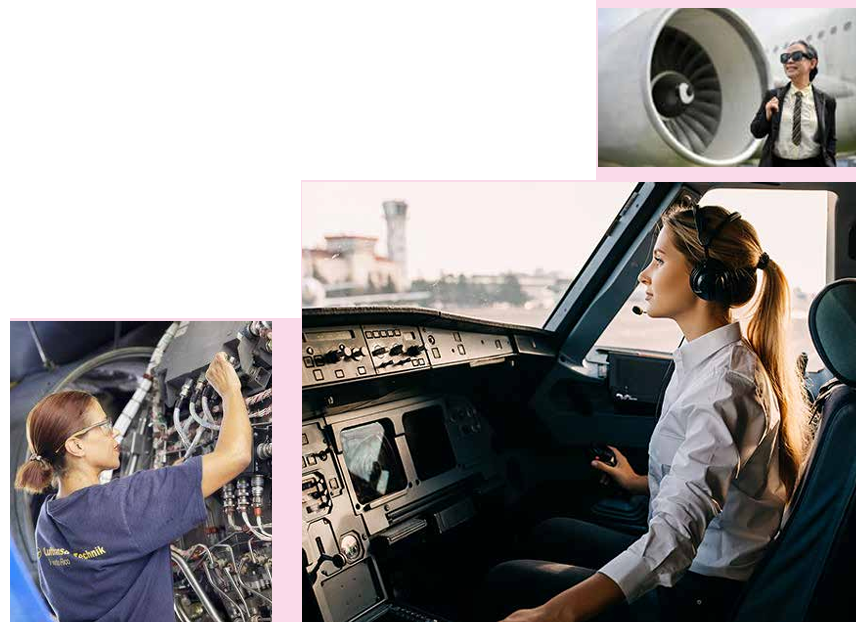
GENDER DIVERSITY IN AVIATION:
CHALLENGES AND PROGRESS
Aviation is a highly technical and dynamic industry, yet it has remained predominantly male-dominated for decades. Women face significant barriers to entry and career advancement across various aviation roles, from piloting to maintenance and engineering. Despite global efforts to promote gender diversity, the industry still struggles with representation and inclusivity.
Gender Disparity and Challenges in Aviation
Women continue to be underrepresented in key aviation roles, with only 5.8% of commercial airline pilots, less than 2% of aircraft maintenance professionals, and around 10% of aerospace engineers being female (IATA, 2023). A lack of visible female role models, workplace biases, and societal stereotypes discourage many women from entering technical and operational fields.
One of the biggest challenges is the historically male-dominated culture in aviation. Women often have to work harder to prove their competence, particularly in maintenance and repair operations, where outdated perceptions persist about their technical abilities. Additionally, the physically demanding nature of certain jobs has contributed to these misconceptions.
Work-life balance is another barrier, as aviation jobs frequently involve irregular hours and extensive travel. Many companies lack adequate parental leave policies and childcare support, making it difficult for women to sustain long-term careers in the industry. Moreover, the gender gap begins early, with fewer female students encouraged to pursue STEM-related education, leading to a smaller talent pool for aviation careers.
Efforts to Promote Gender Diversity
Various organizations have launched initiatives to address gender disparities in aviation:
Women in Aviation International (WAI): Established in 1990, WAI provides scholarships, mentorship programs, and networking opportunities for women in aviation.
International Society of Women Airline Pilots (ISWAP): Focuses on increasing the number of female pilots by offering career resources and professional support.
ICAO’s Gender Equality Program: A global initiative launched in 2022 to promote gender balance across all aviation sectors through policy recommendations and collaboration with industry stakeholders.
Building a More Inclusive Aviation Industry
To close the gender gap in aviation, proactive measures must be taken at multiple levels:
Encouraging Women in STEM and Aviation:
Outreach programs, scholarships, and mentorship initiatives should be expanded to attract more women to aviation careers.
Creating Inclusive Work Environments:
Airlines and MRO organizations need to enforce anti-discrimination policies and implement more flexible work arrangements to support career longevity for female professionals.
Increasing Female Representation in Leadership:
Setting gender diversity targets and promoting successful women as role models can inspire the next generation and ensure more inclusive decision-making within the industry.
The aviation sector has made progress in promoting gender diversity, but significant challenges remain. By fostering a culture of inclusion, investing in education, and eliminating structural barriers, the industry can create an environment where talent, not gender, defines success. With continued efforts from organizations, airlines, and regulatory bodies, aviation can move toward a future where opportunities are equally accessible to all.
